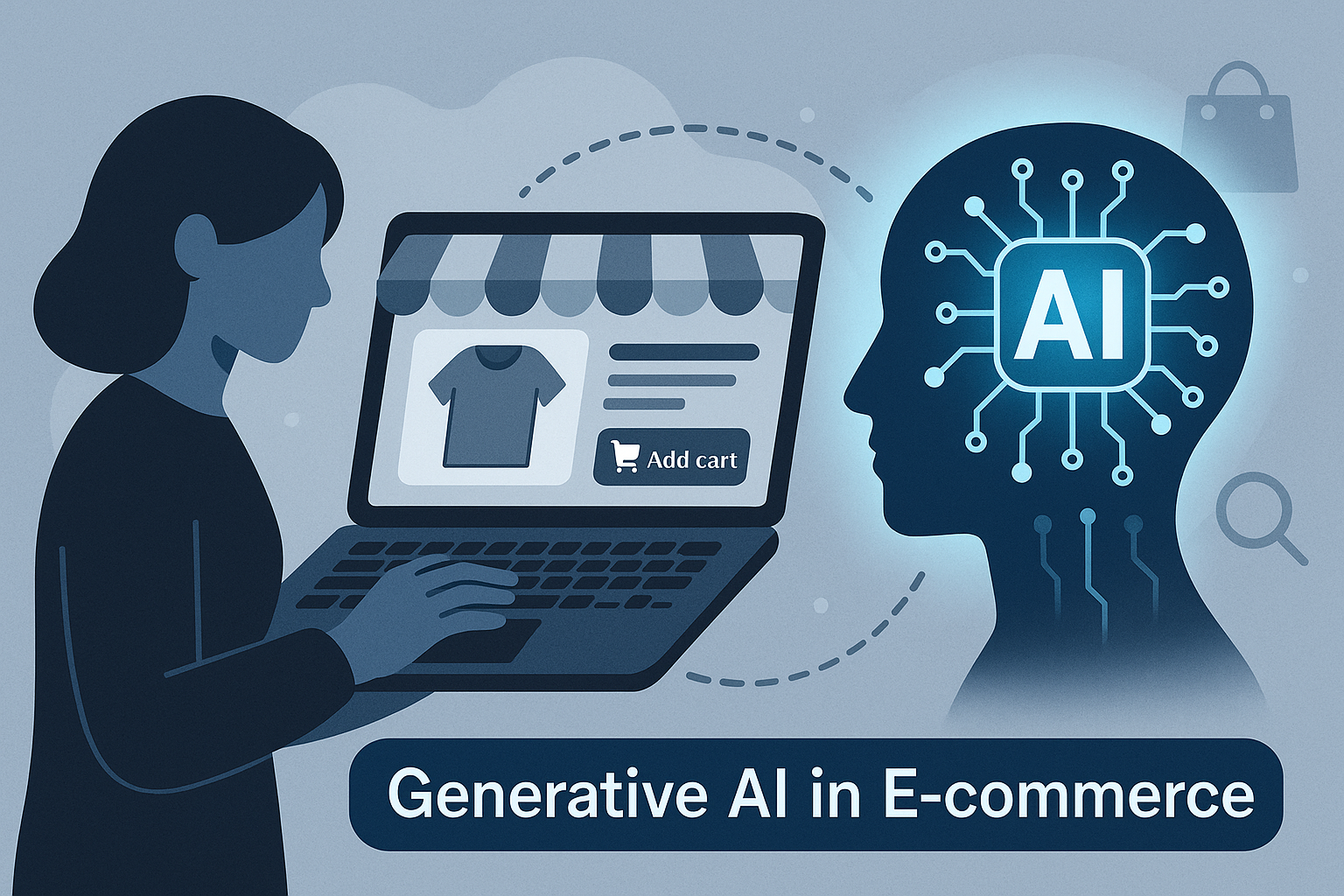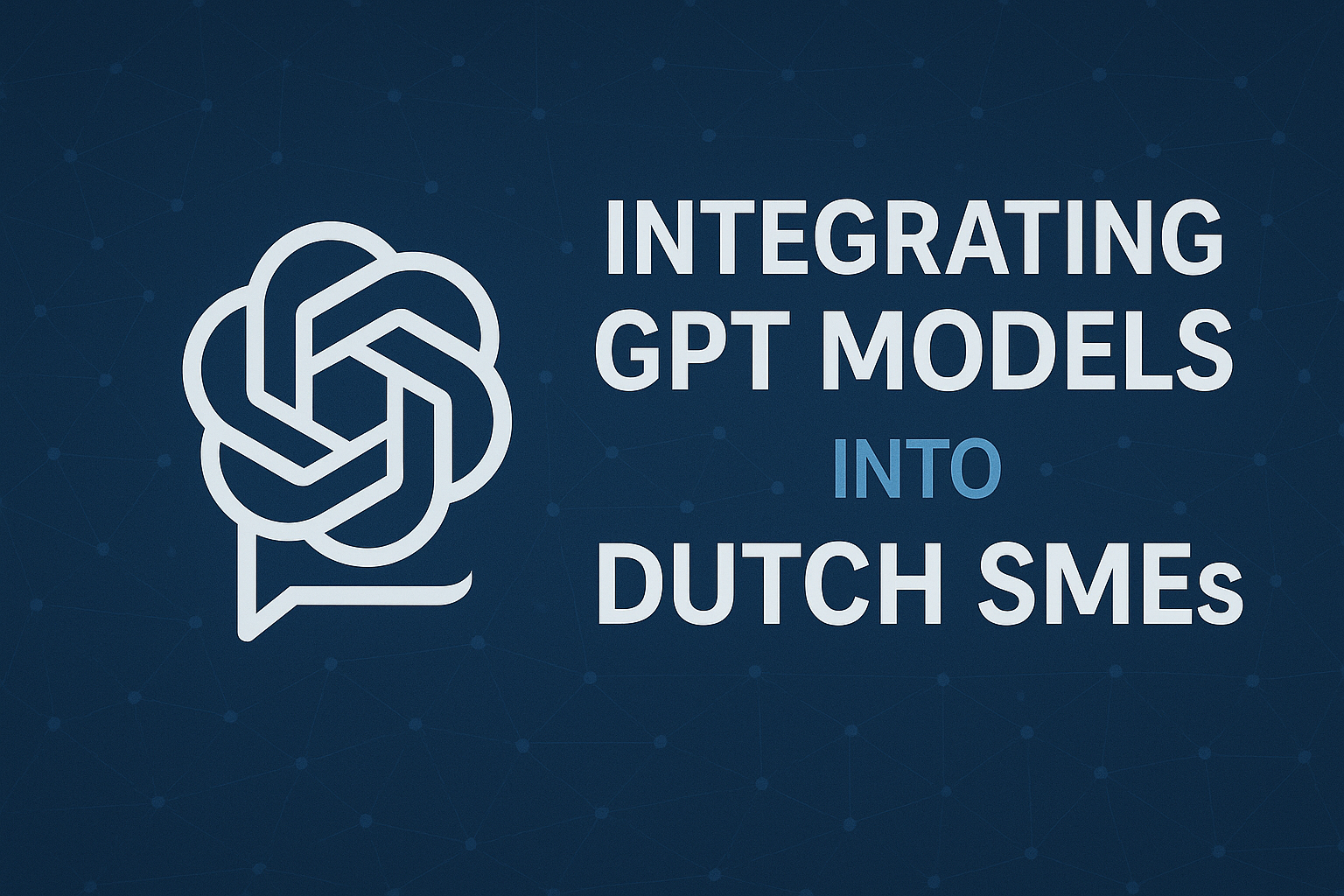Generative AI in E-commerce: Hyper-Personalised Shopping for the Dutch Market
(Hypergepersonaliseerde e-commerce in Nederland)
The Netherlands has one of Europe’s most demanding online audiences. Shoppers expect gebruiksvriendelijkheid (user-friendliness) and persoonlijke relevantie (personal relevance) on every screen. Generative AI—large language models, diffusion image generators, and graph neural nets—is emerging as the technology that finally delivers both at scale, turning static catalogues into adaptive journeys that feel unmistakably Dutch.
1. From Segments to “Segment-of-One” (Van segmenten naar ‘segment-van-één’)
Traditional recommendation engines group shoppers into broad buckets. Generative AI rewrites every product story for a single visitor. Rotterdam-based Shopgeist fine-tunes GPT-4 on click-stream data to create narratives that mirror a user’s Instagram aesthetic; average dwell time rose 26 % in its 2025 pilot. A Statista survey confirms the appetite: 72 % of Dutch buyers prefer offers that “feel written for me.”
2. AI-Powered Search & Discovery (AI-gestuurde zoek & ontdekking)
Amsterdam electronics retailer Coolblue quietly uses a transformer-based “search-to-cart” model that parses colloquial queries—“laptop voor video-editing under €1.000”—and generates a ranked list of matches with autogenerated comparison blurbs. Bounce rates on search pages dropped by 14 %, per an internal memo referenced in Emerce.
3. Dynamic Pricing & Real-Time Promotions (Dynamische prijzen & realtime promoties)
Generative AI can simulate demand curves and craft micro-promotions on the fly. Utrecht startup Pricetide feeds weather, event and competitor data into a variational auto-encoder that drafts limited-time bundles—think rain-proof cycling gear hours before a storm hits Amsterdam. Participating webshops reported a 9 % uplift in average order value during last winter’s trials, according to Pricetide’s white paper.
4. Instant Visual Merchandising (Instant visuele merchandising)
With diffusion models, retailers generate locale-specific imagery—winter coats against a snowy Utrecht canal, or Koningsdag-orange sneakers in Dam Square—without expensive photo shoots. Global tools like Stability AI integrate easily, but Dutch fashion brand Scotch & Soda is training an in-house model on its own look-books to preserve brand tone while localising context.
5. Conversational & Voice Commerce (Conversational & voice-commerce)
Dutch consumers increasingly use smart speakers; 31 % shop via voice at least monthly, says GfK Nederland. Generative dialog models let webshops hold fluid Dutch conversations, even parsing regional dialects. Bol.com’s “Interactieve Assistent” beta answers warranty questions, cross-sells accessories and completes orders, reducing human chat load by 40 %.
6. Supply-Chain Forecasts & Returns Reduction (Supply-chain prognoses & retour-reductie)
Returns cost Dutch retailers nearly €1 billion yearly. Generative graph models from TNO predict fit-related returns and suggest size advice inline—already cutting apparel returns 7 % in a recent TNO–Mode Alliance pilot. Upstream, transformer-driven demand forecasts help logistics teams at PostNL allocate vans more efficiently, trimming “empty-kilometres” on Dutch roads.
7. Ethics, GDPR & AI Act Alignment (Ethiek, GDPR & AI-Act afstemming)
The Autoriteit Persoonsgegevens warns that opaque personalisation may breach the GDPR’s transparency articles. Draft EU AI Act text classifies recommender systems for e-commerce as “limited risk,” but mandates clear user disclosure. Retailers are adopting SHAP dashboards and OpenAI moderation filters to flag hallucinated specs before they reach consumers—protecting brand trust and regulatory compliance.
8. Implementation Roadmap for Dutch Retailers (Implementatieroadmap voor Nederlandse retailers)
- Audit data readiness—quality, consent status, and localisation gaps.
- Select a proof-of-value use case: dynamic copy, AI search, or returns prediction.
- Fine-tune models on Dutch language & culture; leverage open-source datasets plus in-house text.
- Deploy with human-in-the-loop; merchandisers approve generated assets before publishing.
- Measure uplift on conversion, retention and returns; iterate monthly.
McKinsey estimates each step compounds to an EBITDA boost of 5–15 % for mid-size retailers McKinsey AI Retail 2025.
9. The Dutch Edge (Het Nederlandse voordeel)
With robust broadband, multilingual talent and a culture of pragmatism, the Netherlands is poised to lead Europe in responsible yet ambitious generative-AI retail. Early adopters like Albert Heijn, Coolblue and Hema illustrate that data plus empathy—not hype—wins customer hearts.
Conclusion
Generative AI is no longer experimental. It is the competitive lever that lets a webshop greet each visitor as “Hallo, dit is precies voor jou.” Ready to transform your storefront into a smart, culturally-attuned shopping companion?
Neem contact op for a bespoke AI roadmap let encotiq help you build retail experiences as innovative as the Dutch market itself.







